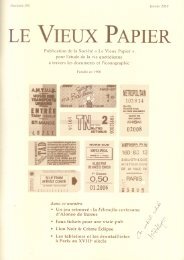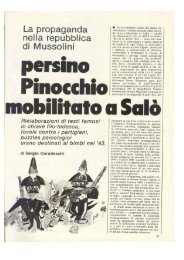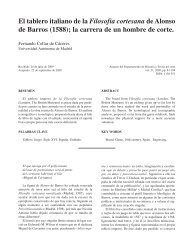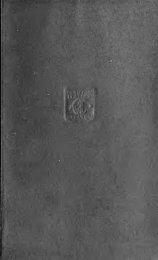Board games from the city of Vijayanagara (Hampi ... - Gioco dell'Oca.
Board games from the city of Vijayanagara (Hampi ... - Gioco dell'Oca.
Board games from the city of Vijayanagara (Hampi ... - Gioco dell'Oca.
Create successful ePaper yourself
Turn your PDF publications into a flip-book with our unique Google optimized e-Paper software.
R.VASANTHA, BOARD G AMES FROM THE C ITY OF V IJAYANAGARA 31<br />
3. Mancala <strong>games</strong><br />
Local names: Chenne mane ata (in Kannada), Omana guntalu or Vamana guntalu or<br />
Achchana gundlu (in Telugu)<br />
Locations: 1. Hemakuta Jaina temples, 2. under <strong>the</strong> boulders, 3. underground temple,<br />
4. Virupaksha temple, 5. Palace area<br />
Population groups: Played only by women and children<br />
Literary sources: Goparaju 1398; Manchena 1400; Anantha 1456<br />
Fig. 10<br />
Fig. 10. Chenne-mane ata or Vamana-guntalu<br />
The game is for two players. They are played on a board with fourteen pits, which<br />
are scooped out <strong>of</strong> <strong>the</strong> ground. The playing pieces could be stones, seeds, or shells, in rare<br />
cases precious stones, gems or pearls.<br />
In Anegondi village, children <strong>of</strong>ten play without a board, but instead create <strong>the</strong>ir<br />
own playing area by scooping out holes in <strong>the</strong> ground and collecting stones or seeds<br />
(whatever is close at hand) each time <strong>the</strong>y want to play. Near <strong>the</strong> Tungabhadra river, <strong>the</strong><br />
game is played with smooth pebbles and in agricultural areas, with seeds. Commonly<br />
used seeds are tamarind, kemiri, sawo and even corn kernels.<br />
The widespread popularity <strong>of</strong> this game, chenne mane ata around this area, played by<br />
women and girls, can undoubtedly be attributed in part to <strong>the</strong> simpli<strong>city</strong> <strong>of</strong> <strong>the</strong> materials<br />
used to play <strong>the</strong> game. This game, in all its variations, attracted <strong>the</strong> royal ladies and<br />
<strong>the</strong>ir assistants. Playing pieces indicated <strong>the</strong>ir class or caste <strong>the</strong>y belong.<br />
Based on <strong>the</strong> version <strong>of</strong> <strong>the</strong> game, <strong>the</strong>re is a preliminary distribution <strong>of</strong> counters<br />
(beans, nuts, seeds, stones, etc.) in <strong>the</strong> board’s depressions. Players move alternatively in<br />
a series <strong>of</strong> “laps”. A lap involves each player in turn selecting all <strong>of</strong> <strong>the</strong> counters in a<br />
depression and lifting <strong>the</strong>se and placing counters in each depression in a prescribed direction<br />
and manner. What happens <strong>the</strong>n is dependent upon <strong>the</strong> version <strong>of</strong> <strong>the</strong> same being<br />
played.<br />
The following five varieties are played at <strong>Hampi</strong>:<br />
- Karu baruva ata, “getting calf” out <strong>of</strong> <strong>the</strong> game, played with 4 seeds<br />
- Katte ata, also called Seenya mukya – also with 4 seeds but little variation in <strong>the</strong> rules<br />
- Tara timbata







